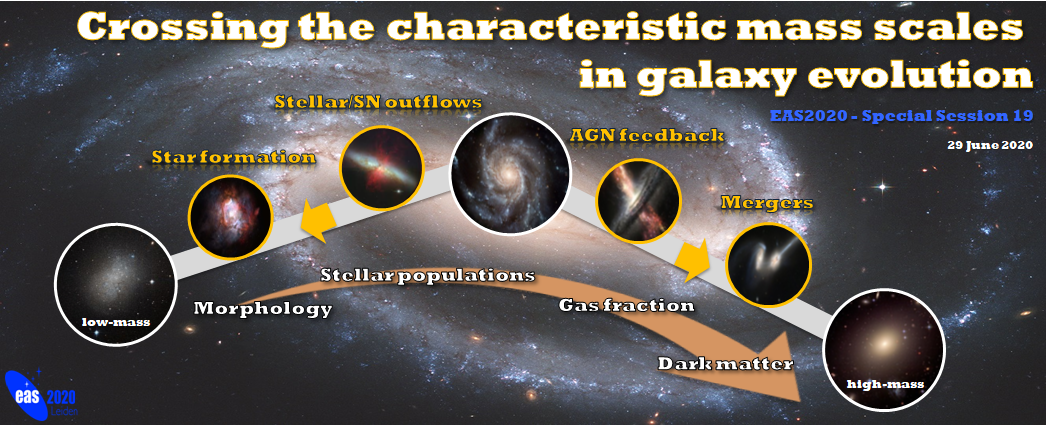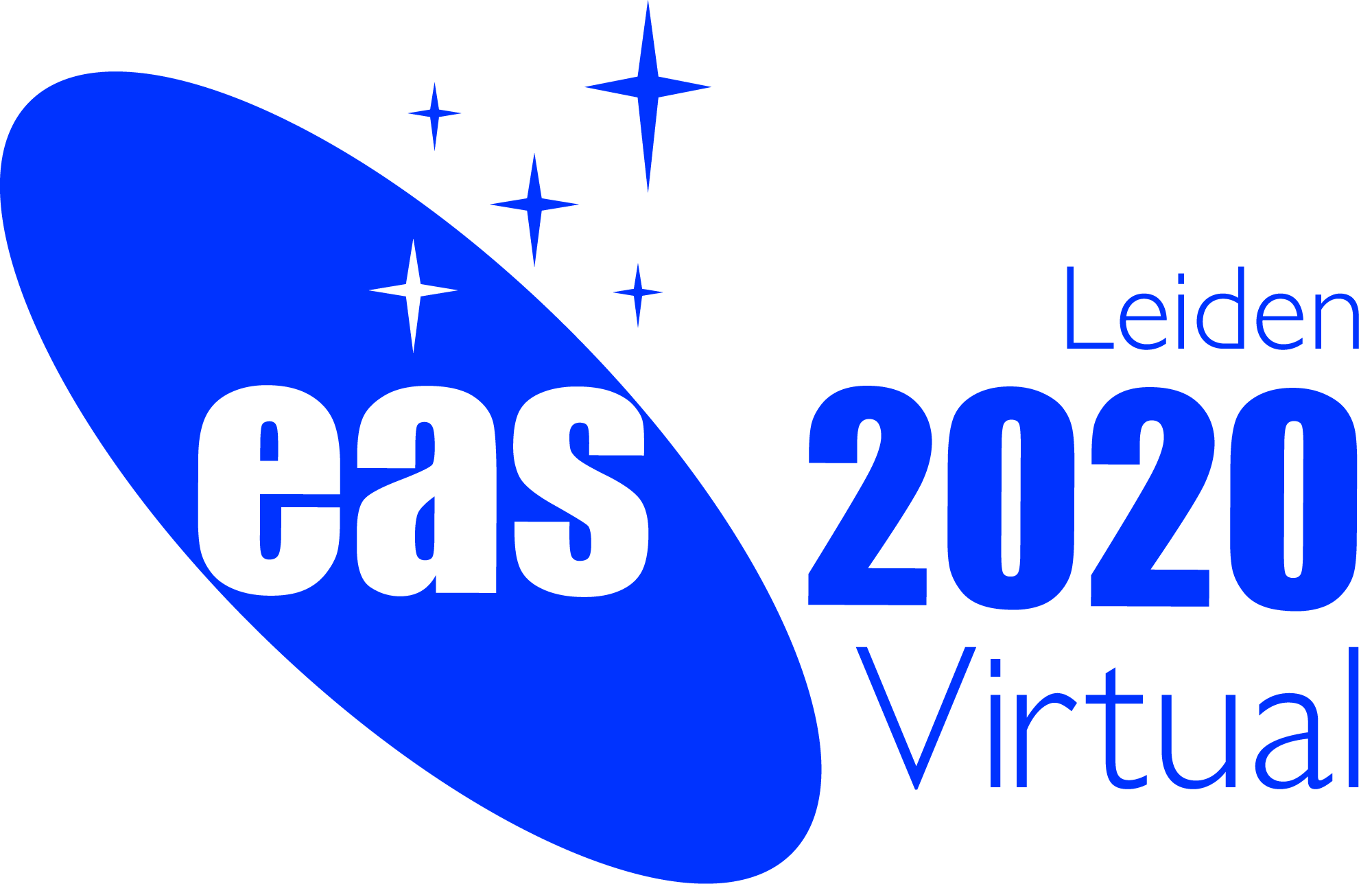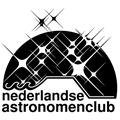Special Session SS19
29 June 2020
Crossing the characteristic mass scales in galaxy evolution

News:
Aims and scope
Different observational and theoretical studies suggest that above a characteristic virial mass scale of 1012 solar masses (about 5×1010 solar masses in stars) galaxy properties, and physical processes governing them, change significantly. Beyond this mass scale, the galaxy population is increasingly dominated by spheroids which have larger sizes, the baryon-to-stars conversion efficiency drops, the gradients in stellar populations and colours get shallower, the dynamics is more dark matter dominated in the centres, while the total mass density profiles get shallower, and galaxy mergers and AGNs become more important in the evolution of galaxies.
The aim of this conference is to get together experts in topics related to the galaxy evolution, who work on late-type and early-type galaxies both at high redshift and in the local Universe, using different observations that probe the properties of stars, the physics of gas and galaxy dynamics. In view of the current and future wide-field photometric surveys (e.g. DES, KiDS, Euclid), optical spectroscopic campaigns (e.g. MANGA, StePS, LEGA-C), radio and submillimetric surveys and telescopes (e.g. ALMA, MeerKAT, APERTIF, SKA), and simulations of unprecedented resolution (e.g. TNG, EAGLE-XL), bringing together experts on various observational and theoretical aspects of galaxy evolution will be fundamental to unveil the physical transformation of galaxies at that characteristic mass scale.
The key points we want to discuss are the following:
- Which galaxy scaling relations break at a characteristic mass scale? Are these breaks related to the same physical phenomena?
- What is the role of internal processes (e.g. feedback) and that of external processes (e.g. mergers) in driving these changes in the scaling relations?
- What is the role of galaxy types? Do the breaks separate regimes where galaxies of different types dominate the overall population?
- What is the role of environment? Are the scaling relations and their breaks varying as a function of local density?
- What is the role of evolution? Are the characteristic mass scales set or influenced by mass assembly? Can this be probed by how do the scaling relations vary with redshift?
- What is the physics behind the characteristic mass scale of Mvir~1012 solar masses? How does it emerge?
- Do state-of-the-art simulations or other kinds of theoretical models reproduce the observed breaks in the galactic scaling laws? Can they constrain the physics of the origin of the characteristic mass scales?
Programme
This Special Session is organized in 3 blocks of 1.5 hours each.
We identify the following broad discussion topics:
- Stellar populations, star formation rate and gas
- Dark matter, stellar-to-halo relation and angular momentum
- Star formation and feedback from a theoretical perspective
Invited speakers
- Camila Correa University of Amsterdam
- Anna Gallazzi INAF - Osservatorio Astrofisico di Arcetri, Firenze, Italy
- Alessandro Sonnenfeld Leiden Observatory, Leiden, The Netherlands
Scientific organisers
- Crescenzo Tortora (chair) INAF - Osservatorio Astrofisico di Arcetri, Firenze, Italy
- Lorenzo Posti (chair) Strasbourg Observatory, Strasbourg, France
- Francoise Combes Observatoire de Paris, Paris, France
- Claudia Lagos International Centre for Radio Astronomy Research (ICRAR), University of Western Australia, Crawley, Australia
- Reynier Peletier Kapteyn Institute, Groningen, The Netherlands
Contact
Updated on Fri Jun 26 16:51:56 CEST 2020
|

 A power cut will shut down all EAS services on Tuesday, 10 January 2017 starting at 7:30 CET.
A power cut will shut down all EAS services on Tuesday, 10 January 2017 starting at 7:30 CET.



